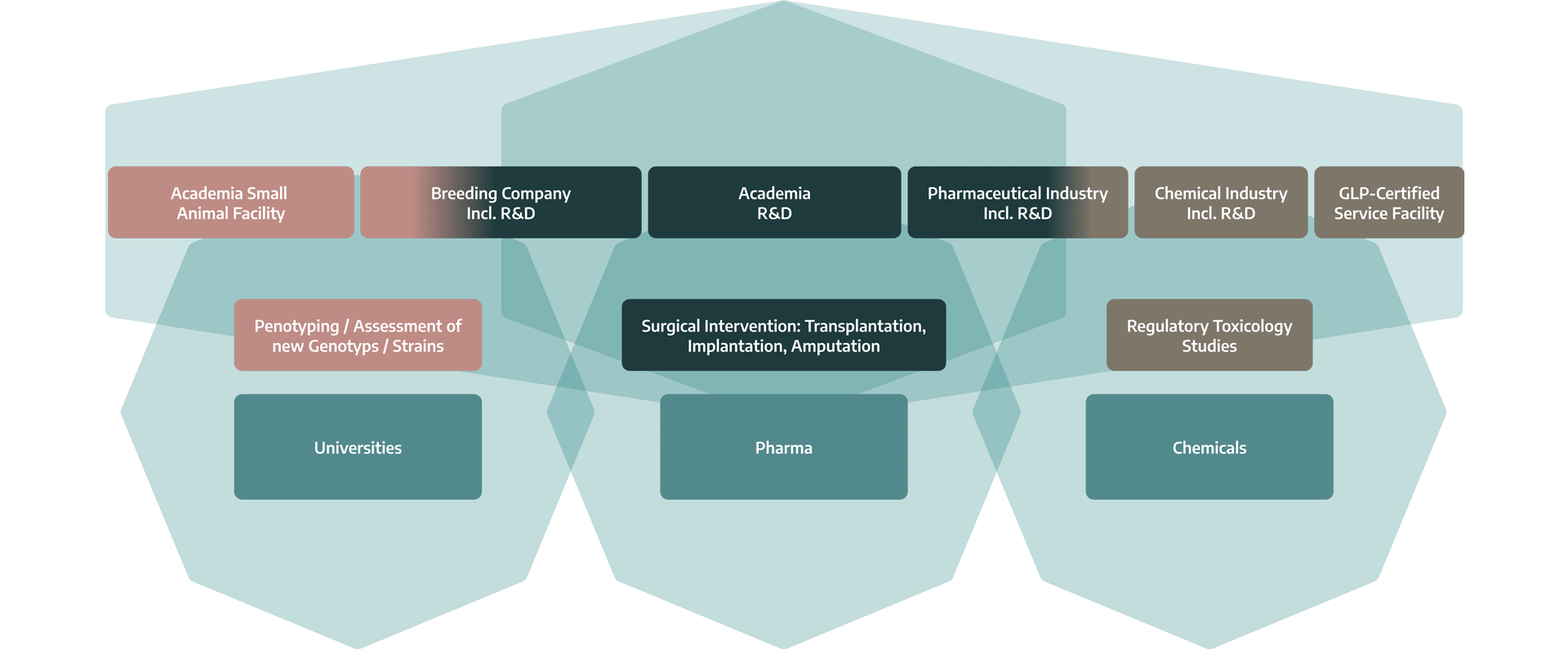Background
Rising animal welfare and reduce the bias
within translational research.
Traditionally, in biomedical animal research, laboratory rodents are individually examined in test apparatuses outside their home cages at selected time points.
However, the outcome of such tests can be influenced by the novel environment, the time of day, separation from the social group, or the presence of an experimenter.
Moreover, valuable information may be missed when the animals are only monitored in short periods.
These issues can be overcome by longitudinal monitoring mice and rats in their home cages.
When the animals are tested outside their home cage, the time of day can play a critical role, too.
Although rats and mice are nocturnal/crepuscular animals, experiments are often carried out during the daytime when the lights are turned on in the animal and experimental rooms.*
* Source: Scientific paper: Development and Application of Home Cage Monitoring in Laboratory Mice and Rats: a Systematic Review
Home cage activity monitoring gives us a unique insight in terms of how the work we do can impact the welfare of animals, thus giving us an opportunity to refine our husbandry processes, scientific studies and care to further meet their needs.
Home Cage Monitoring (HCM)
The iMouse approach allows researchers to collect data on animals’ without physical presence in the laboratory.
The primary goals of digital home cage monitoring:
- Non-Invasive Data Collection: Traditional methods of monitoring animals often involve disturbing their environment, leading to altered behavior and stress.
Digital home cage monitoring aims to minimize this disruption by collecting data, using non-invasive techniques. - Long-Term Observation: With continuous monitoring, researchers can study animals over extended periods, providing insights into their daily routines, circadian rhythms, and responses to various stimuli.
- High-Quality Data: Digital monitoring can provide more accurate and detailed data than manual observations, 24/7 reducing human influence and bias.
- Reduced Stress: By allowing animals to remain in their familiar environment, digital home cage monitoring reduces stress compared to procedures involving frequent handling or relocation.
- Multiple Parameters: Researchers can monitor various parameters, such as movement, activity levels, feeding patterns, social interactions.
- Automation: Automation of data collection and analysis minimizes the need for constant human intervention and increases the efficiency of data processing.
- Generation of training data: Digital monitoring can be used as a source to generate excellent training data for new staff and machine learning.
- Incentivation for laboratory staff: If scientists and laboratory workers are required to spend less time in the lab due to digital home cage monitoring systems, it can impact their work motivation, job satisfaction, and attract new candidates to apply. With the newly gained time, the training of algorithms can be improved and further supported.
- Time reduction: Digital home cage monitoring systems can significantly reduce the time required to access the lab. The higher the security level of a laboratory, the more time-consuming and intensive the entry process becomes, involving procedures like changing clothes, showering, and other protocols. These systems help streamline access by minimizing the need for physical presence.
Links within the HCM context:
Related Scientific Papers:
https://www.nature.com/articles/s41598-023-37464-8
https://www.biorxiv.org/content/10.1101/2023.03.07.531465v1.full
Official Research Network with HCM: https://www.cost-teatime.org/
iMouse Scientific Paper:
https://www.fortunejournals.com
Our Target Group

We build tailored solutions for your unique needs.